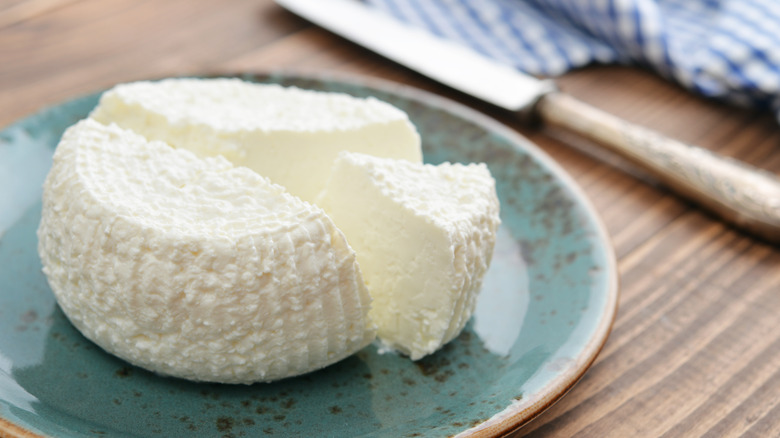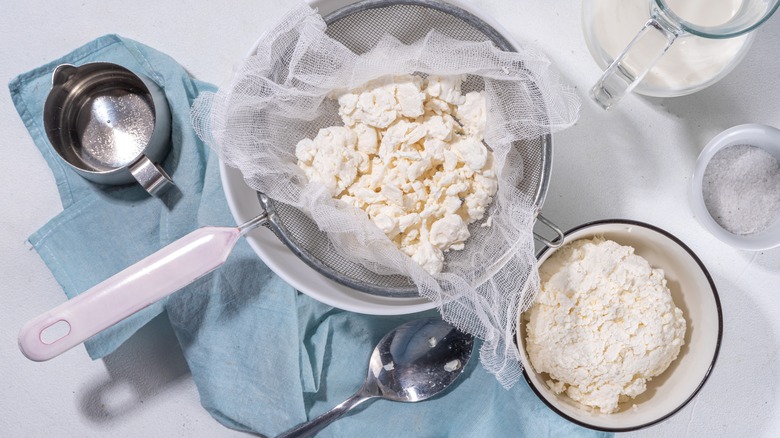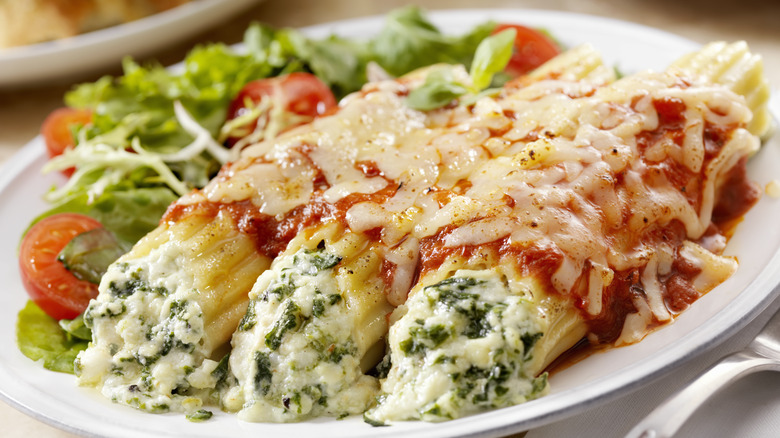What To Know Before Freezing That Ricotta Cheese
Like so many Italian foods, ricotta is made with just a few simple ingredients, and how good it tastes depends on the quality and freshness of these ingredients. But as a fresh cheese that has not been aged and is often free from preservatives that prolong shelf life, the same things that make ricotta so delicious also make it spoil quickly — about one week after the container has been opened, to be precise. If you've ever used just a couple of tablespoons of ricotta for one recipe, then returned days later to find the remainder covered in mold, you've probably wondered if there's a way to buy yourself some extra time. The answer is yes and no.
When it comes to storing ricotta, you can use the freezer, but it's important to know that it will compromise the quality of your cheese. While its flavor may endure the freezing process, the texture of ricotta suffers once it has been frozen and thawed, transforming from smooth and creamy to gritty and clumpy.
How ricotta is made and how this affects storage
To understand how best to store your ricotta for an extended period, it's useful to know how ricotta is made. The process involves heating milk two times (hence the name, which means "twice-cooked" in Italian) until the curds separate from the whey and the end result is a wet, cream-like cheese. Some ricottas are, in fact, made up of about 80% water. This high moisture content is what makes ricotta is so fluffy, but it is also the reason that bacteria can grow quickly in it in warm environments, causing the cheese to spoil. That also means it does not freeze well. Once placed in the freezer, the water in ricotta transforms into ice, causing the curds and whey to separate. Later thawing the cheese reveals a coarse, crumbly consistency.
If you find yourself with an overabundant quantity of ricotta and need to freeze some, there are a few steps you can take for the best results. First, use a spoon to mix up the ricotta and then press a paper towel gently on the top of it. This will evenly distribute and remove some of the moisture. Transfer it to an airtight container and into the freezer, where it can be stored for about two months.
Making the most of frozen ricotta
To thaw your frozen ricotta, transfer it from the freezer to the fridge. It should be soft enough to use in about five hours and must be consumed within three days. Avoid leaving it out on the counter, where bacteria may develop, making it unsafe to consume. Because of textural deterioration, it's no longer ideal for use as a primary ingredient in its raw form, so you'll want to skip slathering it on a piece of toast or serving with fresh fruit.
The best way to make the most of ricotta that has been frozen is to cook or bake with it. With the help of heat and a few other ingredients, thawed ricotta can still lend some creaminess, body, and flavor to sweet and savory dishes. Its versatility makes it a great addition to light breakfast foods, like orange ricotta pancakes, as well as hearty dinners, such as lamb and ricotta crespelle.



